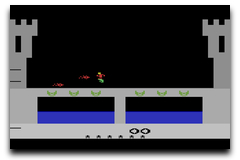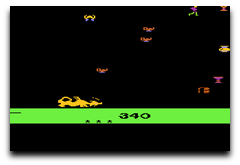 When we invest in a new video game we want to feel satisfied by the content supplied in the game, we want to know we’re getting our moneys worth in the investment. Publishers, on the other hand, want us to keep our old games so they stay out of the used market. A publisher does not make a dime on used game sales. Their primary weapon to stop game sales? Downloadable Content (DLC).
When we invest in a new video game we want to feel satisfied by the content supplied in the game, we want to know we’re getting our moneys worth in the investment. Publishers, on the other hand, want us to keep our old games so they stay out of the used market. A publisher does not make a dime on used game sales. Their primary weapon to stop game sales? Downloadable Content (DLC).
1. Publishers Spend Lots on Marketing
A great example being GTA IV, hardcore gamers have a short attention span and live on hype more than physical games. Today, games live in press releases, demos, cinematic and live gameplay footage at conferences and on the web. Then, a game hits the shelves and sells millions of copies for a week or two before it’s forgotten. Publishers have marketed their game well, spent thousands on conference booths, streaming video bandwidth and rushing game demos through development and testing cycles early to get eyes on their titles.
Let’s face it, gamers that scrambled to buy Grant Theft Auto IV have moved onto the next big title or have decided to go outside for some fresh air (probably the former). Hardcore gamers consumes games like candy, sells them off for store credit and works towards their next purchase.
2. Publishers Want Loyalty
DLC breaths new life into old games, making them remain valuable for months after the hype and excitement has died. We’re now spending USD $60.00 for some of these new “current generation” game titles for a few days or weeks of excitement. Free downloadable content brings new reasons to play our “old stale” games and allows us to feel comfortable about our 60 bucks spent on a title.
Rainbow Six Vegas 2 is receiving a new “Fan Pack” for gamers to re-energize themselves about the “old” sequel to Rainbox Six Vegas. A game released in March is considered old by gamers, probably rarely played on Xbox Live anymore and needs something to keep the fans interested. This helps build loyalty to your product so the next franchise title which is released has a better chance of being purchased by your fan base because they can look forward to additional free content in the future.
3. Publishers Hate Used Games
Publishers are helping stick those games in the hands of the gamers for a longer period of time by supplying free add-on packs. Why would you re-sell your precious title back to the store when you could hold it and wait for potential DLC?
Publishers receive no revenue from the resale of a video game so it’s in their best interest to keep it out of the used markets. If there is a chance your beloved game will receive new features, at no cost to you, wouldn’t you hold off from selling it to see what’s coming?
Once a gamer has sold their title to a retail chain for pennies they’re unlikely to re-buy the title with the typical 80% markup when DLC arrives. They may opt to borrow a friends copy or rent the title rather than re-purchase it; neither fair well for the publisher in terms of revenue.
Games are expensive. Consumers must be wise to the best value in their video game titles and publishers want you to choose them for your gaming entertainment. Competition is high, profit margins are low and the market is all about sales volume. Publishers want repeat customers, people who feel their games are valuable before and after the purchase and are willing to share their loyalties with others.
Do you collect old console games, or do you sell them off to game stores and/or eBay? Would you consider holding off a sale if there was a great chance of new downloadable content?

 While Bobby Kotick said the titles, “don’t have the potential to be exploited every year on every platform with clear sequel potential and have the potential to become $100 million dollar franchises,” Phil Harrision sees it as a personal challenge to prove him wrong.
While Bobby Kotick said the titles, “don’t have the potential to be exploited every year on every platform with clear sequel potential and have the potential to become $100 million dollar franchises,” Phil Harrision sees it as a personal challenge to prove him wrong. Now here is another interesting video game for the Atari 2600, the game Dragon Fire consisted of two game screens, one which you ran across a bridge while fireballs were shot at you, you had to duck or jump over the fireball. This screen was a side-scroller style screen (although it doesn’t actually scroll), at the other end of the bridge was a castle door which you’d enter to get to the next screen.
Now here is another interesting video game for the Atari 2600, the game Dragon Fire consisted of two game screens, one which you ran across a bridge while fireballs were shot at you, you had to duck or jump over the fireball. This screen was a side-scroller style screen (although it doesn’t actually scroll), at the other end of the bridge was a castle door which you’d enter to get to the next screen. When you finished collecting all the treasure an exit would pop up in the corner and you had to run to it without being burned by the fireballs, that dragon would turn from left to right nearly instantly too! Then, you’d jump into the exit and be back on the bridge again, but this time it was harder. You could die up to 7 times before the game was over (just to show you how hard it is, they gave you a bunch of lives).
When you finished collecting all the treasure an exit would pop up in the corner and you had to run to it without being burned by the fireballs, that dragon would turn from left to right nearly instantly too! Then, you’d jump into the exit and be back on the bridge again, but this time it was harder. You could die up to 7 times before the game was over (just to show you how hard it is, they gave you a bunch of lives).